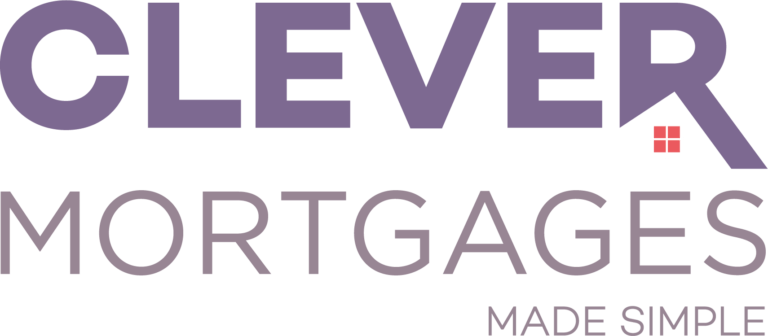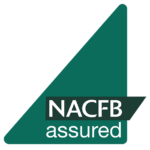Usually, lenders require at least a 5% deposit to readily provide a mortgage. A higher deposit means you’ll be eligible for more lenders and products, plus access to better rates- however, this isn’t always an option for first-time buyers in the current market. For those who can’t save up a deposit, or those who want to get onto the property ladder as soon as possible, there are other routes you can take that involve a much smaller, or no deposit.
What is a 100% mortgage?
A 100% mortgage, in the simplest terms, would be a loan that covers the total value of the property you’re purchasing, without the need to save a deposit of your own. It would entail the prospective buyer loaning the full cost of the property using a single provider.
It’s vital to be aware that whereas this may sound appealing, especially to first time buyers – a 100% mortgage (using just one provider to lend the full purchase price) is extremely rare, or unavailable in the current market. Lenders generally view a 0% deposit mortgage as a very risky investment.
Guarantor mortgages
Are possible if you have a close family member who is both able and willing to help, requiring them to offer their own savings, property (or both) as security for your loan, thereby becoming your guarantor. Your guarantor would be liable for any payment you miss and would be partially responsible for your mortgage.
Right to Buy
A right to buy scheme that gives you the right to buy your council house at a discounted price if you fit certain criteria. Some lenders allow you to borrow 100% of the discounted price (the discount varies depending on the type of property and the duration of your tenancy), with the different between the discounted price and the full value of your property acting as the deposit. LINK TO BELOW INFO
Shared Ownership
A scheme where you purchase a percentage share of the property, say 25%, and pay rent to the housing association for the other 75%. Some lenders will allow you to borrow a 100% of the share you purchase, most lenders however require you to put in a 5% deposit.
For example, take a property that’s valued at £150,000, You could buy 25% of the property, which would be £37,500. Of that you would need to put down £7,500 (5%) for the deposit then take out a mortgage with a lender to pay the remaining £30,000 (20%). LINK TO BELOW INFO
Can I get a 100% mortgage?
With a willing and able guarantor or via one of the schemes mentioned above, you could be eligible for a 100% mortgage with a 0% deposit – however, deals are scarce and there’s no guarantee you’d be offered a 100% mortgage. It’s advisable to speak to an experienced mortgage broker to get the best information for your personal situation – mortgage brokers have access to a wide range of products and should be able to help you onto the property ladder.
- Guarantor Mortgage Types
- Family deposit mortgages
- Saving as security
If your family member wishes to use their cash savings as security for your loan, some lenders will offer a mortgage where your family members deposit around 10/20% of the property price in a special savings account. This money will be held as security for your mortgage until certain conditions have been met, whether that be based on a set number of years or until you’ve paid off a pre-agreed sum of your mortgage, at which point your family member would have their savings returned.
It’s still possible for your family member to earn interest on the money that’s being held – however, it may be at a lower rate than other savings accounts. It’s well worth speaking with a mortgage broker to find the best deal for you and your family.
Communication between yourself and your guarantor is key; they must be fully aware of their responsibility and understand the terms of the agreement made. If you are unable to meet your mortgage repayments, the lender will look to your guarantor to make the payment. If the lender had to repossess the property and it was sold with negative equity, your family member’s savings could be used to make up the difference.
Property as security
Your family member can choose to use their own property as security for your mortgage. Your family member would need to own at least 25%-60% of their home outright for this to be viable but, like using savings as security, as long as you are able to keep up repayments for your mortgage, this can allow first-time buyers struggling to save up a deposit to get onto the property ladder.
Family offset mortgages
A family offset mortgage allows parents to help their children or grandchildren to take out a mortgage and help them onto the property ladder.
This type of mortgage works by you putting your savings into a linked savings account (with your child or grandchild), which is set up with the mortgage lender.
This then acts as a deposit for their chosen property and the lender provides the finance for the remaining value amount. Obviously, the more money that’s in the bank account – or offset against the property value – the smaller your child or grandchild’s mortgage will be.
Interest isn’t paid on the amount in the bank account – only on the amount that your child or grandchild takes out as part of their mortgage. This rate will depend on the lender, rate and term.
What’s good about this type of mortgage is that the savings remain in your name. You can take your money back once 75% of the property value has been paid back. You won’t gain any return by helping your children or grandchildren in this way, but you also won’t lose anything.
Some lenders allow parents to deposit cash that reduces the interest charged on the child or grandchild’s mortgage. Others allow buyers to borrow 100% of the purchase price if 20% of this amount is deposited in the linked account. This cash is then subject to a charge.
Family link mortgages
The Post Office Family Link mortgage allows first-time buyers to borrow 100% of a property’s value, using the (outright owned) property of a close relative by taking out two mortgages; one on the home you wish to purchase, and one on the home your relative owns outright. This option is popular with parents who’d like to help their children get onto the property ladder but don’t have access to a large lump sum to help.
The Post Office would loan you 90% of the value needed to buy your home as a mortgage, and as the buyer, you’d be the only person named on this. The remaining 10% needed for a deposit would be taken as a mortgage secured against your family member’s home, with both of you being named on the mortgage but you won’t be added to the deeds of your relative’s property.
You, the buyer, would be expected to make two separate monthly repayments for the first five years. One repayment towards your family member’s mortgage – which is interest free, and one repayment towards your own mortgage – which is subject to interest. For the remaining term of your mortgage you’d only have to make one monthly repayment towards your mortgage until it’s paid off.
It’s important to make sure the repayments are manageable, or you’d risk losing your property.
If you don’t have a potential guarantor, there are other solutions to help you in your journey to purchase your first home.
Can I get help with buying my first home?
Help to Buy
Help to Buy is a UK Government-funded project, designed to help people with lower incomes get onto the property ladder. There are several schemes within Help to Buy, focussing on different aspects of the buying process and all created to help as many people as possible secure their own homes.
Help to Buy – Equity Loan
The Help to Buy equity loan scheme gives you the chance to purchase your home with a small deposit by boosting the amount you’ve saved. You would initially be expected to save up a minimum 5% of your deposit, then using the Help to Buy equity loan, the Government would grant you a loan of up to 20% (of the property’s value) – giving you a 25% deposit and access to far more mortgages and better deals.
The Help to Buy equity loan is available to first-time buyers and current homeowners – however, the property must be a new-build and can’t exceed the value of £600,000. The Government also provides a slightly altered scheme in London for prospective buyers, offering an equity loan up to 40% of the property’s value, reflecting the increased property costs that London dwellers face.
If you have more than 5% saved, don’t worry! You can save up to 65% of your deposit and still be eligible for this scheme – if you use a minimum of 10% Help to Buy equity loan and a minimum 25% mortgage.
Another huge benefit of this initiative is the interest – or lack-of. You won’t be charged any interest for the first five years of taking out your equity loan. After that you’ll only be charged a fixed fee of 1.75%, which rises each year following the increase of the Retail Price Index, plus 1%.
The Help to Buy equity loan scheme has been extended to 2023, meaning there is still time to save up a 5% deposit and take advantage of this offer, However the scheme is being amended from 2021. This scheme is available in England – and although there Help to Buy opportunities in Scotland, Wales and Northern Ireland, the terms are slightly different, so it’s worth looking this up if you want to buy a house in any of these areas.
It’s important to be aware that you can’t use the Help to Buy scheme to buy a second home or property to let.
Help to Buy – ISA
Unfortunately, the Help to Buy ISA scheme ceased accepting new applicants November 2019, if you’re eligible you can still apply for a Lifetime ISA.
Help to Buy – Shared Ownership
The Help to Buy shared ownership scheme is, a combination of buying and renting. Often aimed at first-time buyers and low-income households, this initiative allows you to buy a share, usually around 25% – 75%, of a resale or new-build home. You would own some of the house and pay a reduced rent for the rest.
This allows prospective buyers on a lower income to access the property ladder, as your deposit would be a percentage of the share being purchased as opposed to the overall cost of the property, meaning you would need a much smaller deposit and mortgage than with full ownership.
Shared Ownership properties are always leasehold, meaning you’d own the properly for a pre-agreed span of time but not the land. It’s possible to renew leases. You do have the right to buy additional shares in the property, if your share reaches 100% equity, the property would no longer be shared ownership. It’s important to check if there’s a cap on the number of shares you can purchase in the property as this may hinder those who aspire to full ownership.
Right to Buy
Right to Buy is a Government initiative aimed at helping local authority tenants to buy their council homes with a substantial discount.
The discount you get is based on the:
- Market value of the property
- Type of property, for example house, flat
- Amount of time you’ve rented and lived in the property
There is a limit on the discount you can receive but the savings are still substantial, making this a great solution for council tenants to get onto the property ladder. If you’re purchasing a property with a Right to Buy mortgage and you’ve lived in the property for 3-5 years, you could be granted a discount of 35%. After that the discount increases 1% for each additional year you’ve been a council tenant.
To qualify, you must have been a council tenant for a minimum of 3 years. This doesn’t have to be a consecutive 3 years, so, if you had a spell of renting privately in between living in a council home, then you could still be accepted.
You’ll still have to provide a deposit and take out a mortgage with the Right to Buy scheme, but if you’re struggling to save enough for a deposit, some lenders may allow you to put your discount towards the purchase price, meaning you wouldn’t need the initial lump sum.
If you were renting a council home before it transferred to another landlord (such as a housing association), you might still be eligible to buy your home with the Preserved Right to Buy scheme.
Lifetime ISA
A Lifetime ISA, or LISA, is a savings account designed to help people aged between 18-39 buy their first home or save up for retirement. Using a Lifetime ISA, you can put in up to £4,000 per tax year, which leads on to one of the most attractive features – the bonus.
The Government will pay a 25% bonus into your Lifetime ISA account, up to a maximum of £1,000 per tax year. This bonus would be paid in monthly so you’d benefit from compound growth – plus, any interest you earn on what you save would be tax-free.
So, if you save £2,000 in a tax year, the Government would pay you a bonus of £500.
It’s important to remember that you can’t just withdraw the money from your ISA to spend on whatever you like without facing a penalty – unless it’s to help buy your first home. After you turn 60, the money can be used as you like to support your pension. If you withdraw any before you’re 60 though, you could face a 25% penalty on the total amount in your account.
At Clever Mortgages, we have access to a wide range of mortgage solutions. Get in touch now and let’s discuss your lending requirements.
Pros
- 100% mortgages are evolving with lenders, meaning more 100% mortgages are being created with different criteria, this means more people in more varied financial situations might be able to access new types of 100% mortgages.
- Gives you the opportunity to buy a property without saving up a deposit
- Some 100% guarantor mortgages allow your family member to earn interest on savings that are used as security
Cons
- It’s hard to find and get approved for a 100% mortgage. Lenders don’t offer them very often, and when they do- they often have higher interest rates than 95% or less LTV mortgages
- You usually need a close family member who’s both willing and able to be your guarantor
- If your mortgage requires savings as security, not all deals allow your guarantor to earn interest and the money will be inaccessible during the term of your mortgage
- If your mortgage requires your guarantor to hold their home as security, your family member’s home could be at risk of repossession if repayments aren’t made
- You still need to consider all the associated fees with buying a property, borrowing 100% of a property’s value with a mortgage won’t cover the other fees.
- If you borrow 100% of the properties value and the property drops in value, you risk not being able to pay off your full mortgage should you chose to remortgage or sell.
If you can’t get a 100% mortgage?
If you can’t get a 100% mortgage, you should look at the property prices in the area you’d like to purchase a property and aim to save a deposit of 5% or more. Saving up can be daunting, but it doesn’t have to be – check out our guide on saving for a deposit



